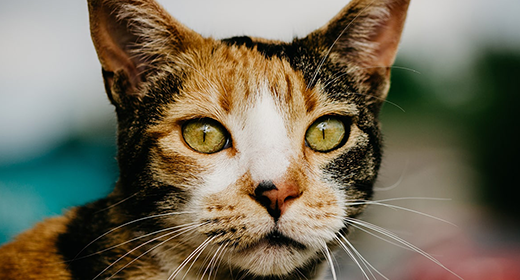

Antioxidants are good for your cat because they play a key role in minimizing damage to cells, including cells of the immune system.
These important, naturally occurring nutrients help maintain health by slowing the destructive oxidative process of cellular molecules. They also can be important in supporting immune responses and vaccine recognition in cats. This may be especially critical for kittens that are being vaccinated while their immune system is still developing.
Additionally, antioxidants can reverse decreases in immune-cell function for senior cats, increasing them back to healthy adult levels.
Antioxidants are nutrients found naturally in the body and in plants such as fruits and vegetables. Common antioxidants include vitamin C, vitamin E and certain compounds called carotenoids (including lutein and beta-carotene). A blend of several antioxidants in moderate amounts may be more effective than high levels of one antioxidant.
As cells function normally in the body, they produce damaged molecules called free radicals. These free radicals are highly unstable and steal components from other cellular molecules, such as fat, protein or DNA, thereby spreading the damage.
This damage continues in a chain reaction, and entire cells soon become damaged and die in a process called peroxidation. Peroxidation is useful because it helps the body destroy cells that have outlived their usefulness and kills germs and parasites. However, when left unchecked, peroxidation also destroys or damages healthy cells.
Antioxidants help prevent widespread cellular destruction by willingly donating components to stabilize free radicals. More importantly, antioxidants return to the surface of the cell to stabilize rather than damage other cellular components.
When there are not enough antioxidants to hold peroxidation in check, free radicals begin damaging healthy cells, which can lead to problems. For example, free radical damage to immune cells can lead to an increased risk of infection.
Because antioxidants play a key role in minimizing damage to cells, such as those that make up the immune system, recent research examined the benefits of certain antioxidants on the immune response of cats. The results of these studies indicated that antioxidants are important in helping cats maintain a healthy immune system.
The research also showed that each antioxidant benefits the immune system uniquely, so one antioxidant at high levels is not as effective as a group of antioxidants acting together.
Antioxidant | Source | Function |
Vitamin E | Plant oil extract, tocopherols | Optimizes immune system’s T-cell activation |
Beta-carotene | Vitamin premix, corn meal, chicken by-product meal and chicken fat | Optimizes types of cells present in the blood, increases antibody levels in the blood and optimizes vaccine recognition |
Recent research also examined the effect of aging on immune responses. The findings indicate that as cats age, immune cell responses may decline. Including antioxidants in your cat’s diet can help reverse the age-related decrease in immune cell function, returning it to healthy adult levels.


Fiber isn’t just for humans — it’s an important part of balanced nutrition for cats, too!
But how much fiber do cats need, what kinds should they be eating and how can you make sure they’re getting the right amount for their bodies?
Cats and humans both need fiber in their diets, but that doesn’t mean cats should be eating the same amount as humans. People are growing more aware of the importance of fiber in our own diets today — and while it’s good to think about your cat’s fiber intake too, it’s important to remember that cats have different dietary needs than humans.
Cats have a much shorter digestive tract than humans, and unlike humans, cats are carnivorous, so their nutritional needs are better satisfied with mostly animal-based ingredients rather than plant matter.
Nondigestible fiber supports cat health by providing bulk that helps move food through the digestive system. This fiber is largely made up of carbohydrates that cats can’t break down in the same way they digest protein or fat. This undigested matter helps usher food through your cat’s system at a healthy pace that lets them absorb the nutrients in their food and eliminate waste comfortably. Higher levels of nondigestible fiber can even help address specific conditions like frequent hairballs.
Fiber can’t be broken down and digested like proteins and fats, but some kinds can be fermented (broken down by bacteria) in your cat’s digestive system. This breakdown produces short-chain fatty acids, which provide energy to your cat’s intestines as it is fermented.
Fiber sources used in pet foods include cellulose, which is poorly fermentable; beet pulp, which is moderately fermentable; and gums and pectin, which can be highly fermentable. Appropriate levels of moderately fermentable fiber, such as beet pulp, provide the benefits of energy for the intestinal lining and bulk without the negative effects of excessive stool or gas. That makes them ideal for the health and comfort of most cats!
While a high-fiber diet can be part of a weight-loss solution for humans, our research has found that it’s not as helpful as a weight-reduction option for cats.
High levels of poorly fermentable fiber in cat food dilute the calories and nutrients in a serving and may make your cat feel fuller. Unfortunately, high fiber content can also increase the rate at which food passes through your cat’s digestive tract, making it harder for them to digest other nutrients in their food. They may be going to the litter box more often, but that doesn’t mean their digestive system is working more efficiently.
When choosing a pet food, remember that cats and humans need different things from their food. All IAMS™ cat food products are made with the right amount of moderately fermentable fiber needed to promote intestinal health. Use the IAMS™ Cat Food Selector to find a recipe tailored to your cat’s unique needs.